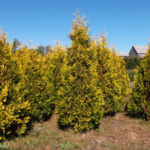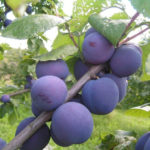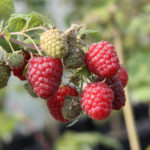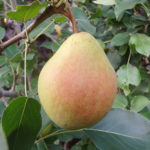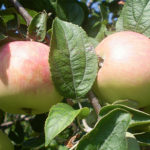Thuja western Spiralis
Decorating country gardens and adjoining territories with evergreen plants is now in vogue. Many people prefer miniature varieties, but conifers with impressive sizes are also often used in landscape design. The classic version is a variety of thuja western Spiralis (Thuja occidentalis Spiralis).
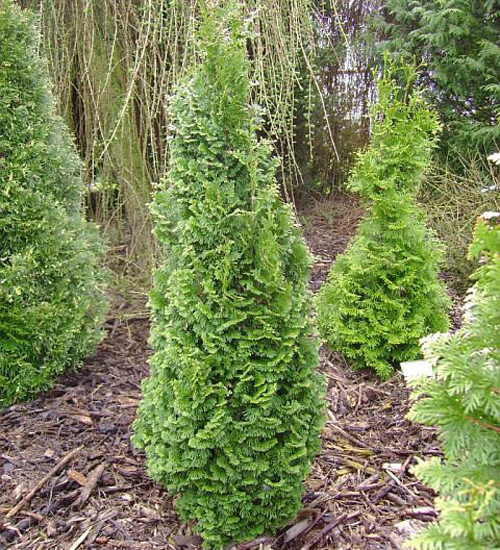
Description of the variety
Distinctive features of this tree are narrow-conical shape and short, spiral-like shoots, twisted like a spiral. Hence the culture has a corresponding name. The evergreen plant has a fairly rapid growth rate, adding up to 30 cm annually. An adult tree reaches a height of 8-10 meters, and its width is approximately 150-200 cm. These parameters characterize an ephedra in 25-30 years. When thuja celebrates its 10th anniversary, its height does not exceed 3 meters.
Scaly needles, densely covering the shoots of the Spiralis variety, are colored green with a bluish tint in the warm season. In winter, the beautiful outfit of the beauty takes on a spectacular bronze tint. The ends of the stems resemble fern leaves. New shoots are visible in the crown of the tree due to the juicy green color. The trunk of the ephedra is “dressed” with grayish-brown bark: smooth in a young plant and cracked in a mature specimen. The root system of this variety of western thuja is superficial. On the culture, bright green oval cones are formed, adding decorativeness to its appearance.
Overall, the plant looks both graceful and majestic. In addition, it is characterized by such features as high frost resistance (the crop is intended for cultivation in the winter hardiness zone 3b, with frosts down to -37.2 ° C), good immunity to diseases and pests. This tree can be cultivated in a large city, since the ephedra quickly adapts to polluted air and does not suffer at all from this.
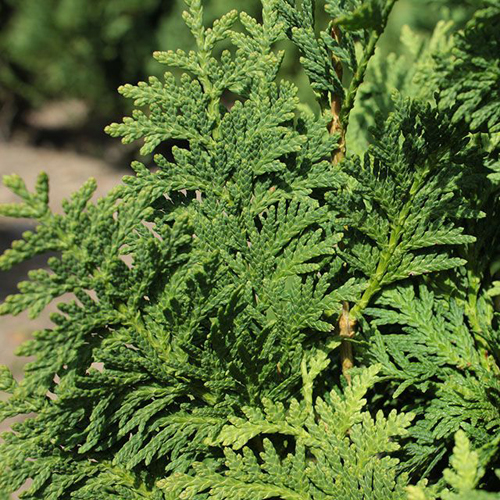
Features of agricultural technology
An evergreen crop should be placed in an area full of sunlight for most of the day. However, at the same time, it must be reliably protected from cold, gusty winds. If you plant a thuja in a shady sector of the garden, its needles will largely lose their attractiveness, because they will fade and thin out. Spiralis does not make high claims to the soil, but she still has her own preferences in this regard. So, ephedra grows better in fertile, slightly acidic, sufficiently moist soil with a good level of water and air permeability. Loamy and sandy soils are most suitable for him. The variety does not tolerate overconsolidation of the soil, as well as drying out of the earthy coma. For this reason, the plant requires regular abundant watering, which must be done 1-2 times a week. The evergreen beauty reacts normally even to temporary waterlogging of the earth. In dry summers, it is recommended to irrigate the crown without fail. Water for these purposes is used slightly warm or cool, but certainly settled - as, indeed, for irrigation. Not receiving sufficient moisture, the plant loses the saturation of the green shade of its needles.
The evergreen crop is fed every spring with a specialized complex fertilizer intended for thuja. In the summer, you can add mineral concentrates enriched with potassium and phosphorus under the tree. Top dressing has a positive effect on the growth and development of the ephedra. During the growing season, it is also important to periodically loosen the soil under the plant, and do it shallowly, and then cover it with mulch, the role of which can be played by peat. Include pruning and shearing in crop care.For the winter, provide the coniferous tree with good shelter so that it does not suffer from frost. You can spray the plant a couple of times a season with an insecticide solution to prevent the appearance of harmful insects characteristic of the ephedra on it: false shields and thuja aphids.
Use cases
Spiralis is used to decorate hedges, divide the territory into zones, decorate the front entrance and the facade of the dwelling. It looks great in compositions with other conifers, as well as shrubs and flowering perennials. This thuja is appropriate in a rocky and Japanese garden. It is also suitable for decorating alleys.
